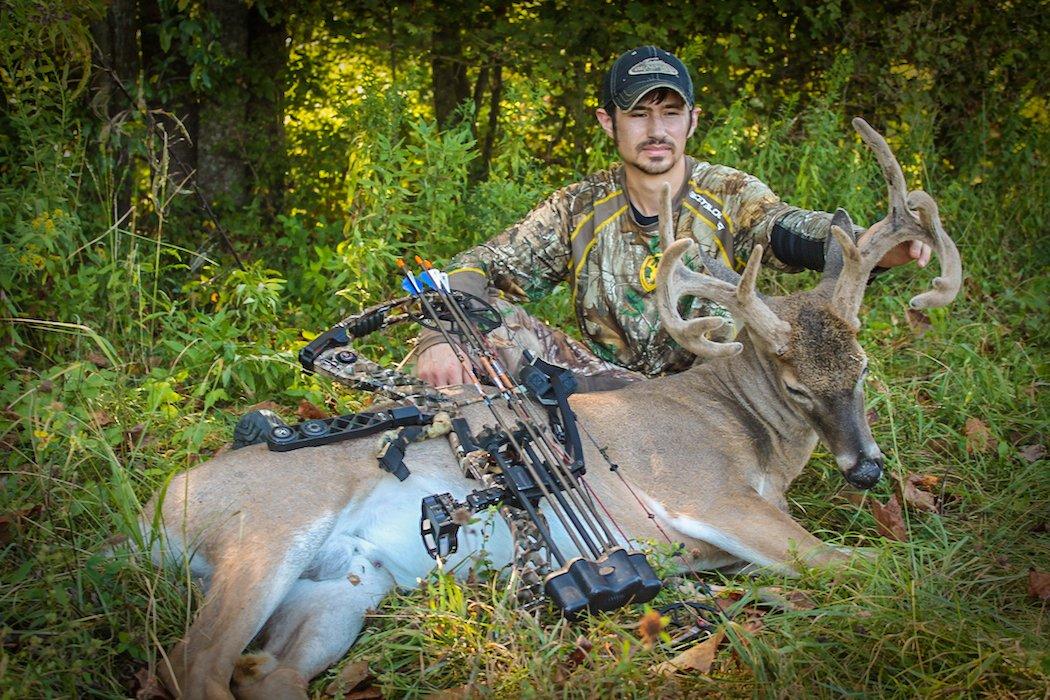YEAH, YOU READ THAT TITLE RIGHT
I've spent most of my hunting and outdoor writing career encouraging others to hunt the right wind—never the wrong one. I changed my mind. Hunt the wrong wind, sometimes. I'd never purposely tried it until this year. And honestly, I was skeptical. But now I'm not.
Earlier this month, I traveled north to hunt the first few days of the Kentucky archery season. Several days in—during a morning hunt—two of the big bucks I had on camera ran across the field, entered the woods 80 yards in front of me, and went back to bed. I knew where they bedded. Through my trail cameras and scouting efforts, I had a good idea where they'd emerge that afternoon.
There was only one problem. The wind was wrong.
The forecast predicted the wind blowing out of the East. An east wind would blow my scent almost directly toward the approaching deer, once they entered the field. With an east wind—if these bucks followed the pattern they had on occasion throughout August—I'd have a very small window to get the shot off before they entered my scent cone.
I went back and forth for the greater part of the day on whether or not to hunt there that afternoon. I knew where they bedded and had a good idea where they would go. Two things I wasn't sure of: Would they emerge before legal light ended, and would the wind be too marginal? I only had one stand I could hunt from. I wasn't risking hanging another (for fear of them hearing or seeing me) with them bedded so close. The one already hung would have to work. But I had to decide if I had enough cushion in wind direction to get the shot off.
I went for it. That afternoon, the two bucks came out exactly where I thought they would. I stopped the bigger buck just shy of my scent cone and took the shot. The result was my first velvet buck.
It was risky. But it paid off.
I've told you the story. Now hear the logic.
Mature bucks use the wind in their favor. Always. They choose bedding areas, travel routes, and feeding destinations, all based on wind direction.
Don't worry. I'm not that guy who says bucks always walk with the wind in their face. That's absurd. All the big bucks would be chilling in Canada if that were the case. That said, mature bucks still use the wind.
That's why you must hunt winds that are ideal for the deer you are after. It makes sense. Historically speaking, looking at past hunts, I've seen more mature deer during marginal winds than when the wind was perfect for me. Maybe it's coincidence. Maybe it's solid proof. But the correlation is stunning.
As responsible hunters, we analyze deer patterns and choose the best stand locations for prevailing winds. That's a good thing. But allow me to offer another plan: Analyze deer patterns and think about what wind is best for them to show up in that location during daylight. Then choose a stand location based on that decision. It's unorthodox, I know. But it worked for me.
So how did this particular buck use an east wind in his favor? The trail he used paralleled the edge of the timber (the woods he bedded in). He paralleled the treeline 70 yards out from the time he entered the field until the time he would have reached his feeding destination (had I not stopped him short at 45 yards). The wind was blowing from the treeline straight toward that trail. The buck knew that and used it to detect potential predators along the edge of the woods. The only reason it didn't work for him this time was because I shot him just short of my scent cone. The wind was right for him to travel that path in daylight. Had the wind been blowing from another direction, he may not have entered the field as early as he did, or he may have chosen another route.
Some hunters won't agree with me. That's OK. That's what makes us individuals. Remember, the key is to implement this tactic very sparingly and only use it when the situation calls for it. It's a calculated risk when you do. This one panned out in my favor.
A BITTERSWEET HUNT
On a different note, despite the filled tag, all didn't go according to plan. When I shot the deer, it quickly became apparent I made a bad shot. The deer reacted slightly—paired with an already bad shot—and the arrow went astray. A gut shot. I screwed up.
I looked at the footage and immediately knew it would take hours for this deer to succumb to the shot. I couldn't look for him that afternoon. There was no arrow and no blood, and I knew if I pressed hard enough the deer would get up from his bed and I'd never see him again. Upon recovering the deer very early the next morning, I knew I'd made the right call. A quick look at the entry and exit holes verified that. For these hits, you must give deer approximately 10 hours before tracking.
I've never let a buck go overnight—let alone an early season one—to find him the next day. I've always prayed that day would never come. But it did. This is real life. It's deer hunting. You pray it never happens. But, if you hunt long enough, it eventually will.
The best thing you can do is give the deer what it's due and exhaust all options to find it.








